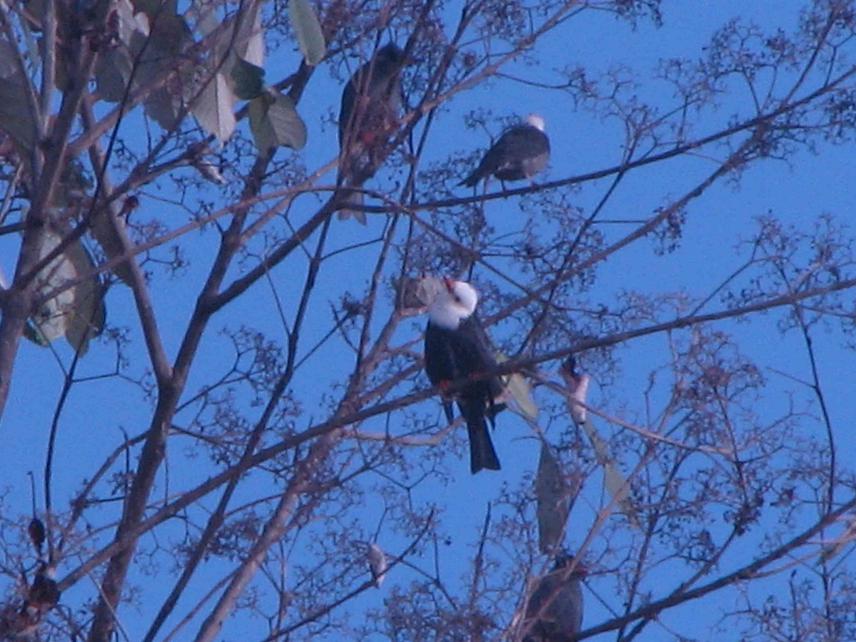Umesh Srinivasan
This project will document bird species and identify areas of tourism value, stimulate community-based bird tourism by training members of the Lisu community and establish a website providing detailed information on the area.

The white-headed Black Bulbul (Hypsipetes leucocephalus stresemanni), discovered wintering in forests near Namdapha, recorded for the first time in India during the 2008-2009 bird survey.
The Namdapha National Park is located in Arunachal Pradesh in the Eastern Himalaya, a global biodiversity hotspot and an Endemic Bird Area. The park harbours over 425 bird species and eleven of the 21 restricted-range species of the Eastern Himalaya as well as other globally threatened species, including White-bellied Heron (Ardea insignis), Cachar Wedge-billed Babbler (Sphenocichla roberti) and Beautiful Nuthatch (Sitta formosa). Several species are restricted to a few hill ranges south of the river Brahmaputra and do not occur in areas such as Nepal and north-central Arunachal Pradesh, important bird tour destinations. These include Snowy-throated Babbler (Stachyris oglei), Cachar Wedge-billed Babbler and Streaked Wren-babbler (Napothera brevicaudata).
Information regarding bird species occurrence in Namdapha comes from sporadic birding tour reports and a single systematic study from a small area in the western part of the park. Higher elevations (1000 – 3000 m ASL) within the park and community-owned forest land bordering the park remain un-surveyed and data-deficient. The project proposes to 1) document bird species and identify areas, especially in higher altitudes, harbouring restricted-range species of tourism value, and 2) to stimulate community-based bird tourism by training members of the Lisu community, and by establishing a website providing detailed information on the area.
The Lisu are the main community residing in and around the park. They lack income-generation options since park presence restricts developmental activities. We aim to train Lisu youth as bird guides, and enable the community to co-ordinate tours (porters, campsite maintenance, food, and other tourism-related activities), thereby generating direct economic benefits from the park for the community and support for the same. Wildlife tourism is also hampered by the lack of a comprehensive open-access database showcasing the biodiversity of the park, logistics involved in travel and information on the area and its people. Therefore, the setting up of a database and website to encourage greater public interest and limited wildlife tourism in the area is crucial.